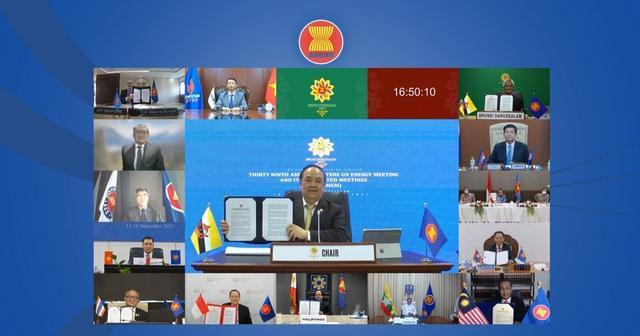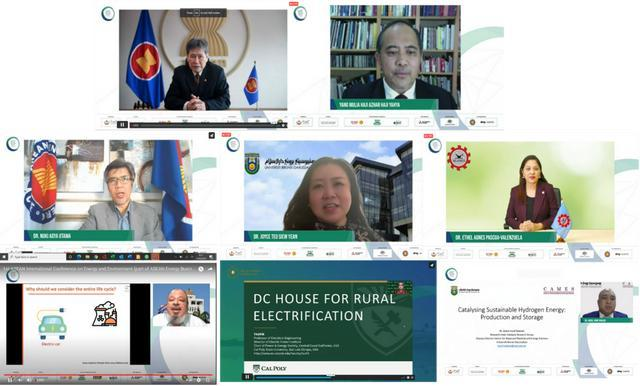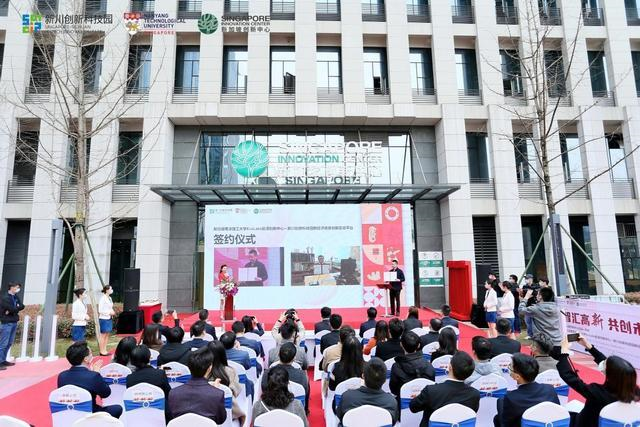东盟想在东南亚建立单一市场一体化,由此带来的经济快速增长导致能源需求不断上升,能源问题亟待解决。
根据《第6版东盟能源展望》,到2040年,东盟能源需求将会大幅上升,增幅达146%。除了能源安全问题,能源需求上升还会导致温室气体排放量增加,预计到2040年达到4171吨二氧化碳当量。保持能源需求稳定是该地区的重大关切,尤其是在当地受气候变化影响环境脆弱的情况下。
为了解决问题,东盟各国能源部长支持通过了区域能源发展蓝图,即第二阶段《东盟能源合作行动计划》(2021-2025年),各国一致认同创新是区域实现能源转型、能源安全和能源可持续发展的关键因素。

第三十九届东盟能源部长会议
在《东盟能源合作行动计划》框架下,东盟制订了一系列措施,促使利益相关方挖掘创新潜力,实现地区宏伟目标,包括降低32%的能耗强度、到2025年将可再生能源在能源结构中的比重提高至23%。
东盟实现能源转型需要政府、产业和大学的共同努力和合作。
研究发现,三螺旋模型通过“政府机构”“商业模式创新”“财务现金流”三位一体来解决能源项目的价值创造,从而推动战略创新。
作为一种决策工具,这一模型在政府、产业、大学中应用广泛。
政府、企业、大学都是三螺旋的重要成员:大学承担研发工作,产业推动研究成果商业化,政府负责规范相关市场。三者在这一模型下相互作用,推动创新合作向纵深发展。
政府决策和目标固然重要,但政产学协同为实现清洁能源系统竞争优势的战略创新提供了一个有意义的框架。此外,通过三者合作创建可持续的能源—气候关系,有利于推动清洁能源的使用。
但东盟当下的三螺旋倡议,无论在国家还是区域层面,仍需提升才能达到最理想的效果。问题的根源在于该倡议并未把政府、产业、大学三者融合起来,而只关注其中一者或两者。这种单边或双边关系削弱了东盟推进能源转型的潜力。
例如在泰国,研究显示尽管政府为加强产学合作做出了努力,但这种合作似乎严重依赖教育。在马来西亚,尽管根据《2013年马来西亚教育、科学和创新指数报告》,该国在144个国家的产学研发中排名18,但对制造业的研究表明,和产业、社区的联系仍不如预期广泛。
在区域层面,政产学三者融合不够紧密的问题同样存在,尽管已经有了明显改善。2021年,东盟能源商业论坛下设的第一届东盟能源和环境国际论坛首次有了大学的参与。东盟能源商业论坛是决策者和行业领袖共同参与的高水平能源会议,其下设的能源环境论坛则是该地区第一个研究能源气候相关问题的科学会议。

第一届东盟能源和环境国际论坛
尽管取得了这一里程碑式的成果,但实现更大范围、更切实具体的政产学融合仍任重道远。
政产学合作的标准解决方案和最佳载体就是建立合作研究中心,将其作为一个独立的政府机构或项目,直接有效地将三者联系起来。
一些发达国家,如美国、日本、西班牙、意大利等已经采取了这一做法。地区内,新加坡最近成立了自己的合作研究中心Ecolabs,致力于推动能源发展。印尼也提出了发展合作项目,如Pasikola,旨在减轻城市交通负担。
成熟先进的研究中心能有效激发创新,并在国家层面上推动制定可持续的能源政策。由新加坡能源创新中心EcoLabs负责的一个旗舰项目利用初创技术和社区建设可持续的初创城市,旨在比现代大城市消耗更少的能源、水资源、食物和土地。

新加坡南洋理工大学 EcoLabs 能源创新中心签约仪式
2021年9月30日,东盟成立了洁净煤技术卓越中心,将其作为洁净煤利用的区域合作研发中心,以提高效率和环境容受性。
2019年,东盟能源中心还启动了两个网络中心,促进该地区工程研究所、学术机构和决策者在增强可再生能源和生物能源专业知识方面的合作。
东盟新兴的合作研究中心和计划能否和其他老牌的研究中心一样收效甚多还有待观察。
东盟需要在第二阶段《东盟能源合作行动计划》框架下,推动实现更大规模的政产学合作,充分发挥东盟能源中心的关键作用,助推区域内的同类合作。
毫不夸张地说,只有扩大政产学合作,东盟才能最大程度实现能源转型,恢复韧性,走上繁荣之路。政府、产业和大学必须继续共同努力,解决共同面临的能源挑战。
来源:《东盟邮报》
编译:陈志莹
ASEAN wants to establish a single market integration in Southeast Asia, and the resulting rapid economic growth has led to rising energy demand and urgent energy issues.
According to the 6th edition of ASEAN Energy Outlook, ASEAN energy demand will rise significantly by 146% by 2040. In addition to energy security issues, rising energy demand will also lead to an increase in greenhouse gas emissions, which are expected to reach 4,171 tons of carbon dioxide equivalent by 2040. Keeping energy demand stable is a major concern for the region, especially in the context of local environmental vulnerability due to climate change.
To address the problem, ASEAN energy ministers supported the adoption of a blueprint for regional energy development, the second phase of the ASEAN Energy Cooperation Action Plan (2021-2025), with countries agreeing that innovation is a key factor in achieving energy transition, energy security and sustainable energy development in the region.
Under the framework of the ASEAN Energy Cooperation Action Plan, ASEAN has developed a series of measures to engage stakeholders in tapping the potential of innovation to achieve ambitious regional targets, including reducing energy intensity by 32% and increasing the share of renewable energy in the energy mix to 23% by 2025.
Achieving the energy transition in ASEAN will require joint efforts and collaboration among government, industry and universities.
The study found that the triple helix model addresses value creation in energy projects through the triad of "government institutions," "business model innovation," and "financial cash flow" to drive strategic innovation. As a decision making tool, the model is useful in the following ways
As a decision-making tool, this model is widely used in government, industry, and universities.
Government, industry, and universities are all important members of the triple helix: universities undertake R&D, industry promotes commercialization of research results, and government regulates the relevant market. The three interact under this model to drive innovation collaboration deeper and deeper.
While government decisions and goals are important, government-industry-university synergy provides a meaningful framework for strategic innovation to achieve competitive advantage in clean energy systems. In addition, creating a sustainable energy-climate nexus through triple helix collaboration facilitates the promotion of clean energy use.
However, ASEAN's current triple helix initiative, both at the national and regional levels, still needs to be upgraded to achieve optimal results. The root of the problem is that the initiative does not integrate government, industry, and universities, but rather focuses on one or both. This unilateral or bilateral relationship weakens ASEAN's potential to advance the energy transition.
In Thailand, for example, research shows that despite government efforts to strengthen industry-university collaboration, such collaboration appears to rely heavily on education. In Malaysia, despite the country's ranking of 18 out of 144 countries for industry-academia development according to the 2013 Malaysia Education, Science and Innovation Index Report, research on manufacturing shows that linkages with industry and communities are still not as extensive as expected.
At the regional level, the lack of integration between government, industry and academia is also a problem, although there have been significant improvements. 2021 saw the first ASEAN International Forum on Energy and the Environment under the ASEAN Energy Business Forum (AEBF) with the participation of universities for the first time. The ASEAN Energy Business Forum is a high-level energy conference for policy makers and industry leaders, and its Energy and Environment Forum is the first scientific conference in the region to examine energy-climate related issues.
Despite this milestone, there is still a long way to go to achieve a larger, more tangible integration of government, industry and academia.
The standard solution and the best vehicle for government-industry-academia cooperation is the establishment of a cooperative research center as an independent government agency or program that directly and effectively links the three.
Some developed countries, such as the United States, Japan, Spain, and Italy, have already adopted this approach. Within the region, Singapore recently established its own collaborative research center, Ecolabs, dedicated to promoting energy development. Indonesia has also proposed development cooperation projects, such as Pasikola, aimed at reducing the burden of urban transportation.
Mature and advanced research centers can be effective in stimulating innovation and driving sustainable energy policy at the national level. A flagship project run by EcoLabs, Singapore's energy innovation center, uses startup technologies and communities to build sustainable startup cities that aim to consume less energy, water, food and land than modern megacities.
On September 30, 2021, ASEAN established the Clean Coal Technology Center of Excellence as a regional cooperative R&D center for clean coal utilization to improve efficiency and environmental tolerability.
In 2019, the ASEAN Energy Center also launched two network centers to facilitate collaboration among engineering institutes, academic institutions, and policymakers in the region in enhancing renewable energy and bioenergy expertise.
It remains to be seen whether ASEAN's emerging collaborative research centers and programs will yield as many results as other established research centers.
ASEAN needs to promote the realization of larger-scale government-industry-academia cooperation under the framework of the second phase of the ASEAN Energy Cooperation Action Plan, and to fully utilize the key role of ASEAN Energy Centers to fuel similar cooperation in the region.
It is no exaggeration to say that only by expanding government-industry-academia cooperation can ASEAN maximize its energy transition, restore resilience and embark on a path to prosperity. Governments, industry and universities must continue to work together to address common energy challenges.
Source: ASEAN Pos